Hollywood & Spine Archive: Halloweek, Part 2 - You Can't Kill the Boogeyman
An overview of the novelization of HALLOWEEN (2018), originally published in November 2022.
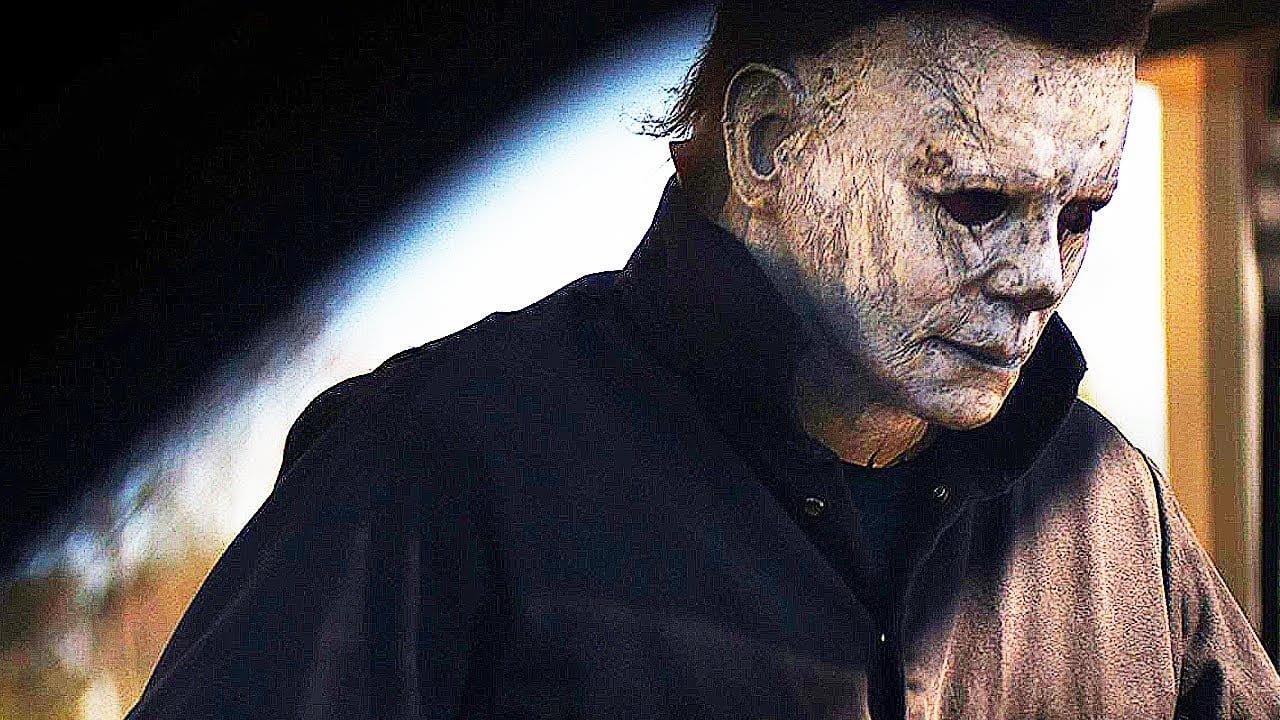
More than any other slasher franchise, Halloween is the one I really let myself get into. The three modern follow-ups to John Carpenter's original film are, for my money, a high watermark for "legacy sequels" - even the maligned third film. (We'll get into that later.) Horror is really the last fertile film genre for novelizations, and these were some of the best to write about. (originally published 11/4/2022)
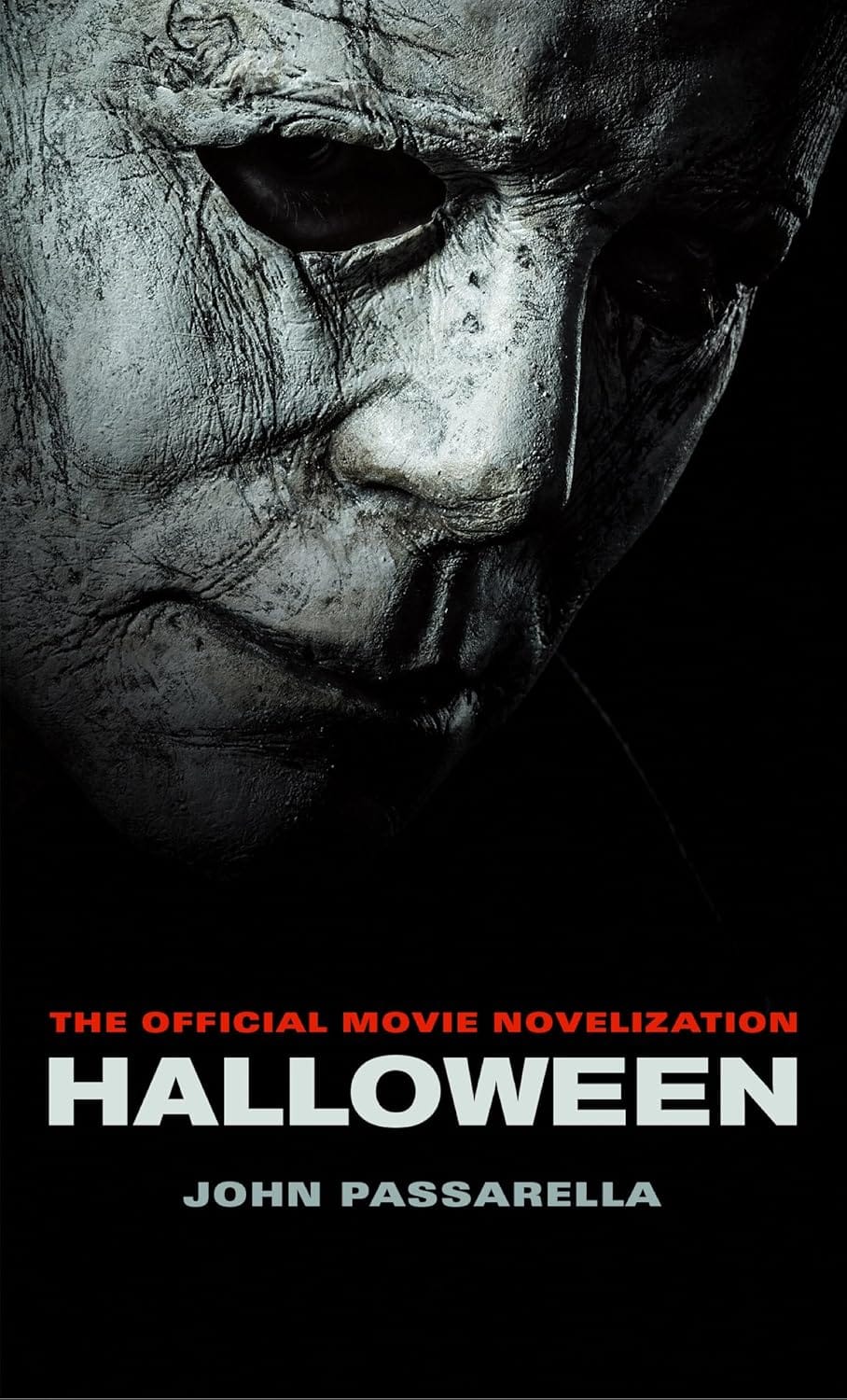
Halloween: The Official Movie Novelization by John Passarella (based on the screenplay by Jeff Fradley & Danny McBride & David Gordon Green; based on characters created by John Carpenter and Debra Hill) (Titan Books, 2018)
The pitch: Four decades after surviving Michael Myers' murderous rampage through the suburb of Haddonfield, Illinois, Laurie Strode (and her estranged family) faces her demons when the masked evil escapes a sanitarium yet again, leaving even more bodies in his wake.
The author: John Passarella won a Bram Stoker Award for his first novel Wither (2000), and spent the next two decades balancing original horror works with novels tied to TV horror/fantasy favorites like Buffy the Vampire Slayer, Angel, Supernatural and Grimm.
The lowdown: In reboot-crazy Hollywood, a new Halloween was almost inevitable. No stranger to bizarre continuity, the late '90s and '00s saw the series hit reset a few times. There was 1998's Scream-ish Halloween H20 (which featured star Jamie Lee Curtis in a continuation from the original 1978 film and its 1981 sequel); then a 2002 sequel, Halloween: Resurrection, which quickly killed off Curtis' character in favor of a lame teen slice-n-dice; and finally, a remake and sequel written and directed by Rob Zombie.
With that history before it (to say nothing of any of the other sequels, except the daring Halloween III: Season of the Witch, which abandoned series lore for a fun standalone horror story), no one could have expected the new Halloween to carry a particularly sharp knife. Yet co-writer/director David Gordon Green - working with comedian (and longtime friend/collaborator) Danny McBride, of all people - got Curtis and even Carpenter on board, serving as executive producer as well as writing a new score with his son and nephew.
What made this return to Haddonfield work? Credit a few things. There's Curtis' steely, traumatized performance, using Laurie Strode as a metaphor for a wave of feminist reckoning in greater society during the 2010s. There's the nuanced character work, populating the town with an assortment of colorful characters. (This shouldn't be a surprise if you've seen any of McBride's brilliant TV works.) And then there's the appropriate disinterest in having Myers - once again clad in dingy mechanic's coveralls and that worn William Shatner mask - serve as anything but an unknowable, evil cypher. He's nobody's estranged brother, nor is he under the influence of a mysterious cult, as in previous sequels; he just wants to kill, and the devilish fun comes in the form of watching people try (and fail) to get out of his way.
Considering the success and growth of horror fiction in the last century, often turning into prime candidates for film adaptations themselves, it's no surprise that a well-executed horror movie, especially a franchise horror movie, would get the novelization treatment in the present day. And Halloween, as prose, does exactly what you want it to do. It's a thrilling, illustrative recreation of the horrors onscreen, with a few intriguing deviations from what you're seeing.
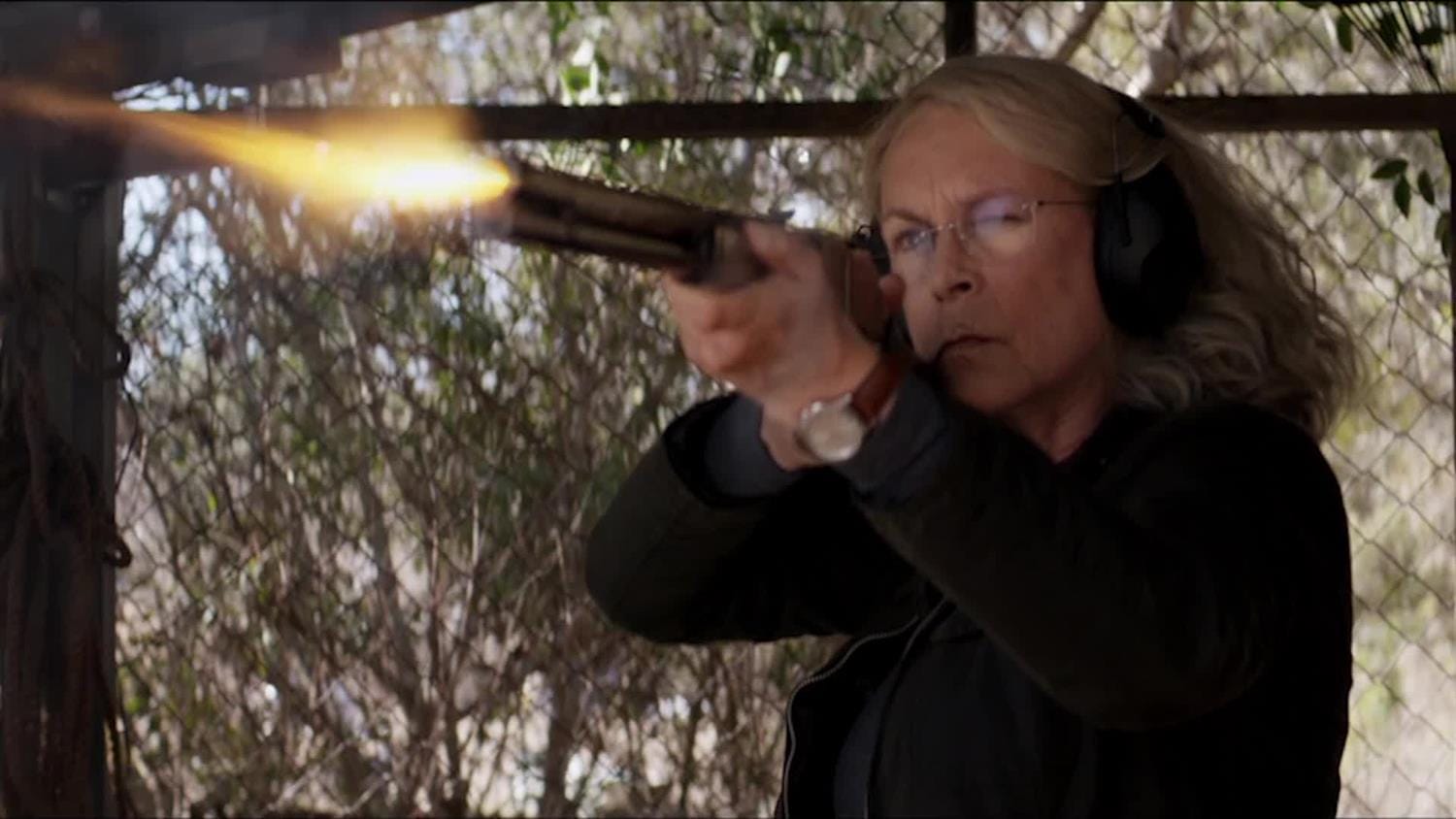
Passarella does a great job bringing Haddonfield to life. There's a lot of characters to juggle, from Laurie's family to her granddaughter Allyson's friends, and plenty of other people whose lives will be changed, shattered or ended by Myers' return. His writing of Laurie is particularly interesting, as he does a good job of spelling out how the trauma of the original film has affected her. There's more in the book that shows her numbing her demons with alcohol - but what's most interesting is her ability to give advice about living with trauma that she herself cannot internalize. This is particularly potent when she gives Allyson a healthy amount of money taken from a mostly-unusable interview with a pair of true-crime podcasters.
"If you allow your fears to take over...if you allow yourself to become a victim, it attacks you," she says in dialogue that didn't make the final film. "It attacks you spiritually. Holds you back. Back from realizing your own destiny." Passarella leaves it to the reader to consider the ironies of this statement from a woman whose life froze after a senseless act of violence she was likely not given time to cope with. (I've always loved Curtis' assertion that Laurie went right back to school after a day in the original film, never allowing herself to face what had happened.)
Elsewhere, Passarella's attention to gory detail colors the many scenes of folks falling victim to Myers. Their final, humanizing moments before the killer arrives - seen in seconds in the finished film - are as violently interrupted as they are in the language of the film. Descriptions of pressure and pain of getting choked or stabbed to death are excruciating, as are the invocations of final darkness taking hold on their vision or consciousness.
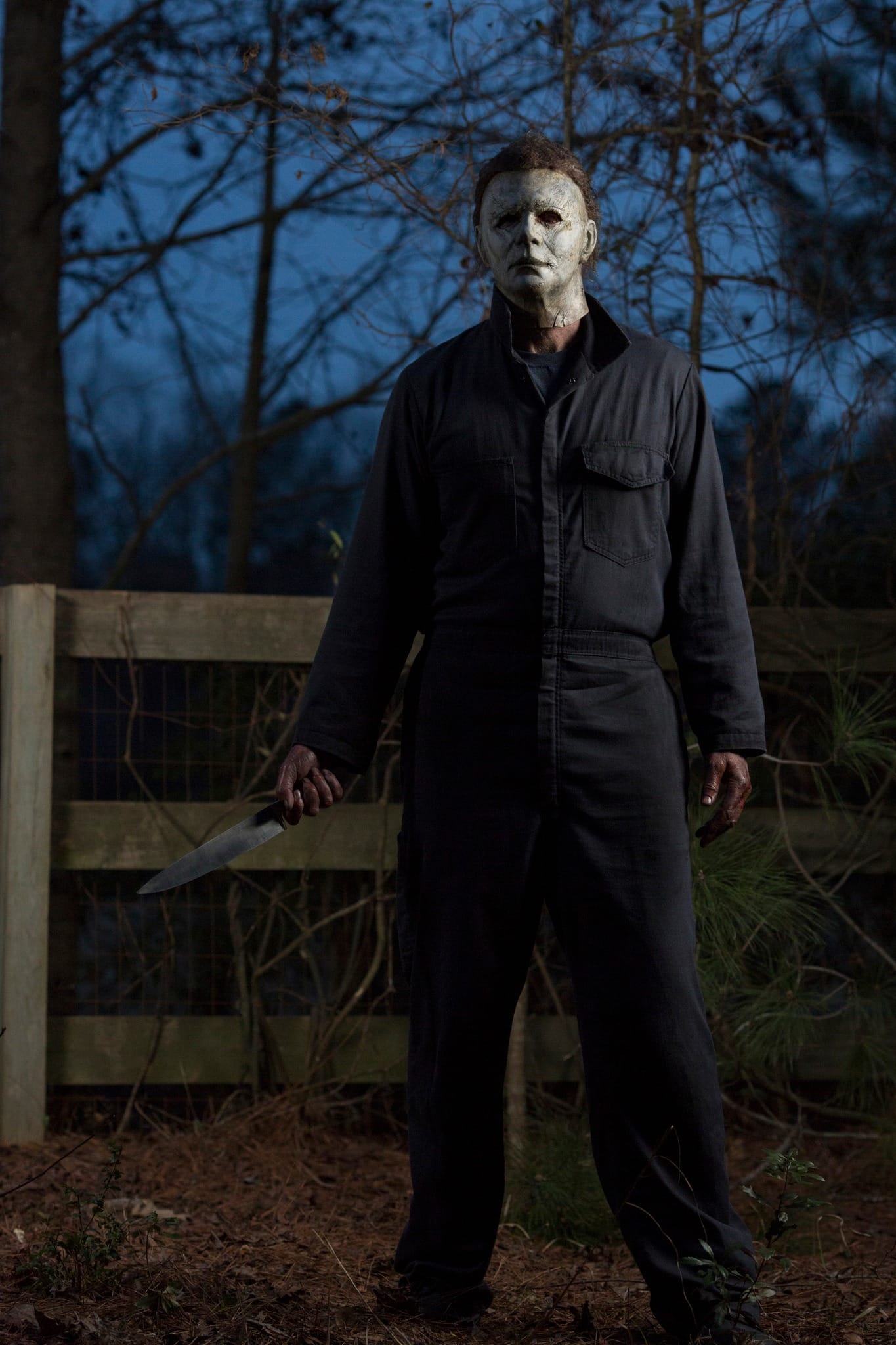
And then there is Myers himself. Richard Curtis' original, coveted novelization to the first film used parallels of of Samhain to imply Michael's violence was as old and evil as society itself and filled in other aspects of his time at Smith's Grove Sanitarium to flesh out his book. That is, of course, eschewed here in favor of brief, brutal, italicized present-tense passages as "The Shape" (as he was credited in Carpenter's film) carries out his random mission of mayhem. At no point do these attempt to justify or explicate his actions: we don't know why he ignores trick-or-treating children or a crying baby in a house he just killed someone in, and outside of a feeling of being "complete" again when he puts his iconic mask back on, there's nothing much else going on but senseless brutality. It was smart for the movie and it's satisfying here as well.
The slashing room floor: At nearly 400 pages(!), there's plenty of interesting deviations and additions in the novelization, many of which, if they were filmed, were never included as home video extras. Allyson is established as an early riser who never lets a morning go by without a run; this eventually lets her in on the tragedy to come when, on Halloween morning, she passes a crowd that discovered a dead dog tied to a tree. (Myers did something similar in the original film.) Laurie's paranoia causes her to spy on her daughter at work (she's some sort of child therapist), and we're with her when she discovers the reports of the incident that freed Myers - news that jolts her out of a hangover from the night before.
Another scene set in the wake of Myers' escape involves the podcasting duo searching for answers about the original "Babysitter Murders"; in the book, they're clearly a couple, and he surprises her with Michael's mask before they enjoy a shower together, unaware of the developing story coming their way. (It's also worth noting that, in the book, it's not exactly a bus crash that sends the Smith's Grove inmates out into the world - and the book plays with the uncertainty of whether it was Michael's obsessed doctor that caused the accident.)
Continuity kills: Now, some of the book's additions and deviations actually set up some inconsistencies for what takes place in the sequel, Halloween Kills. For one, Officer Hawkins, the arresting officer after Michael's original rampage, seems pretty definitively dead when Dr. Sartain slashes him with a pen knife. (You'd be forgiven for assuming the same before production started on the sequels!) He also tells the not-so-good doctor that the old Myers home was demolished and replaced by a community garden, a point contradicted by Kills.
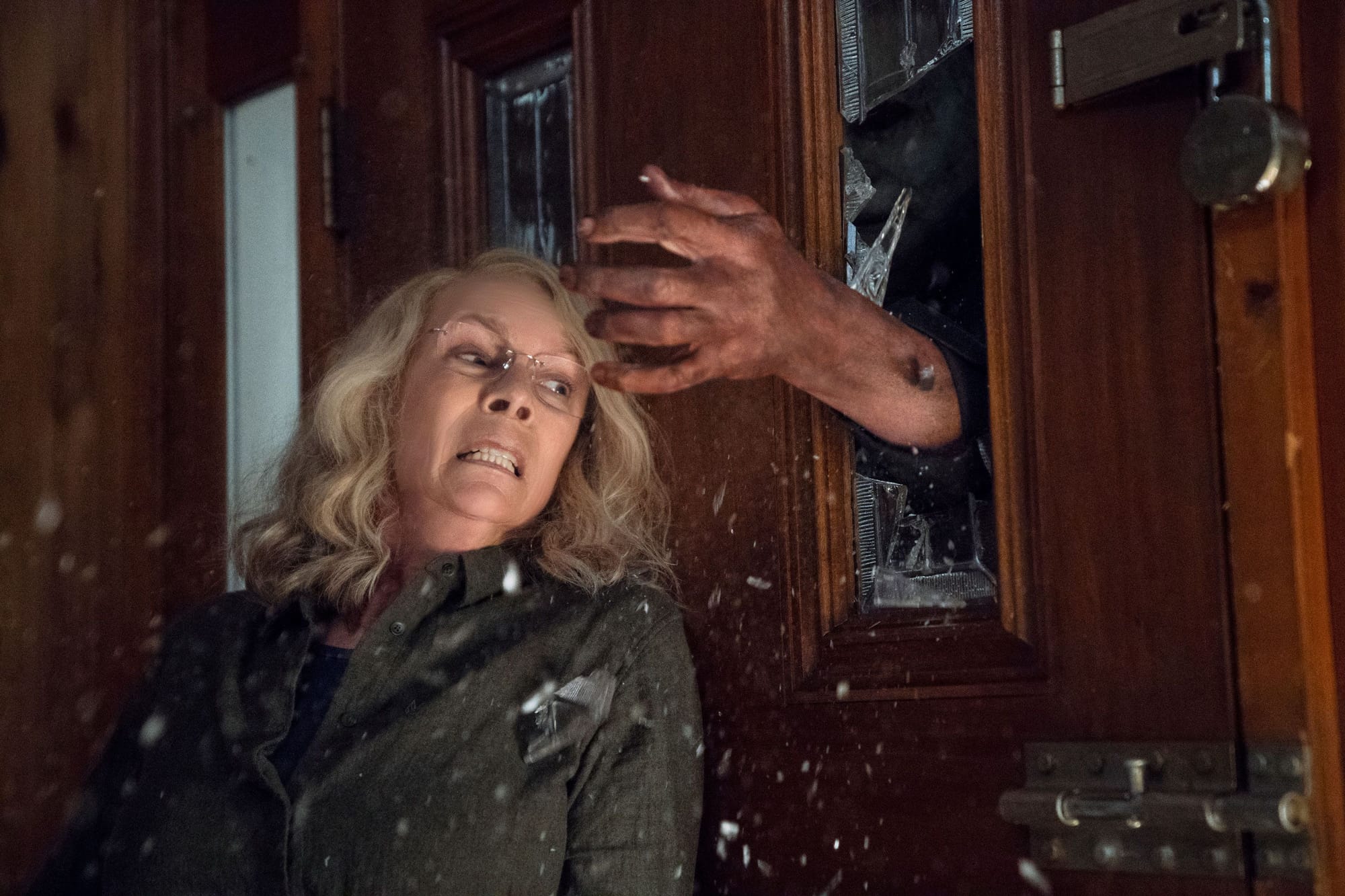
Cameron Elam, Allyson's boyfriend who gets into hot water by drunkenly kissing a girl at the Halloween dance, has a bit of a different fate here, too, in a scene that was ultimately cut from the picture. The young love interests nearly reconcile outside of school grounds until they're approached by cops imposing a curfew as a result of Michael's escape. Cameron can't help but mouth off to one of the officers (who are admittedly kind of rude) and is in turn arrested; he's last heard begging his friend Oscar to see that Allyson gets home safe. (In the book, Allyson is immediately put off by Oscar's sleazy/dorky antics, instead of finding them merely tolerable throughout the film - at least, before his unwanted advance and eventual demise at the hands of The Shape.)
The last word: Just like the movie that inspired it, Halloween is a terrifically terrifying read that'll appeal to not only longtime fans of the series, but horror-lit enthusiasts as well.
